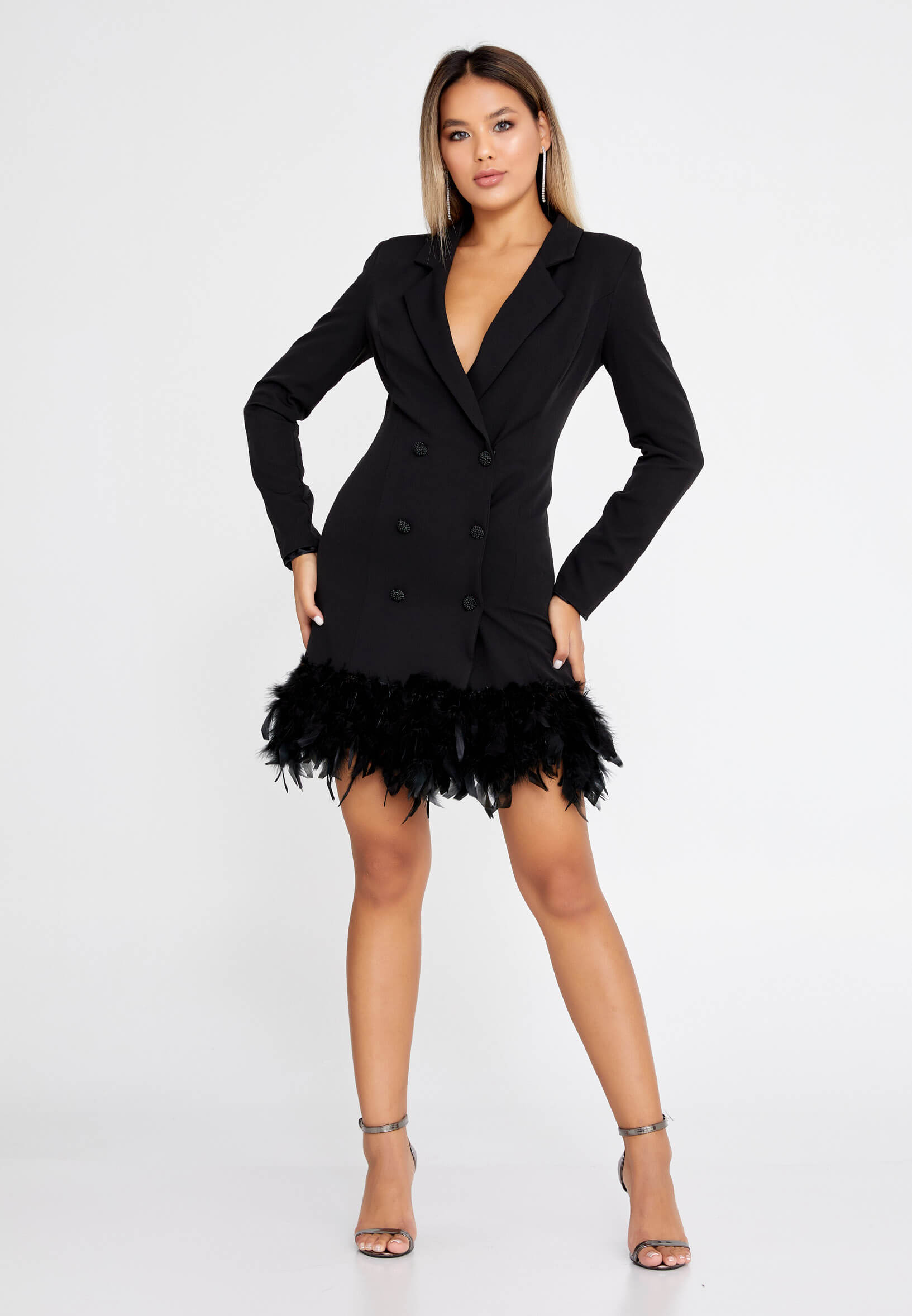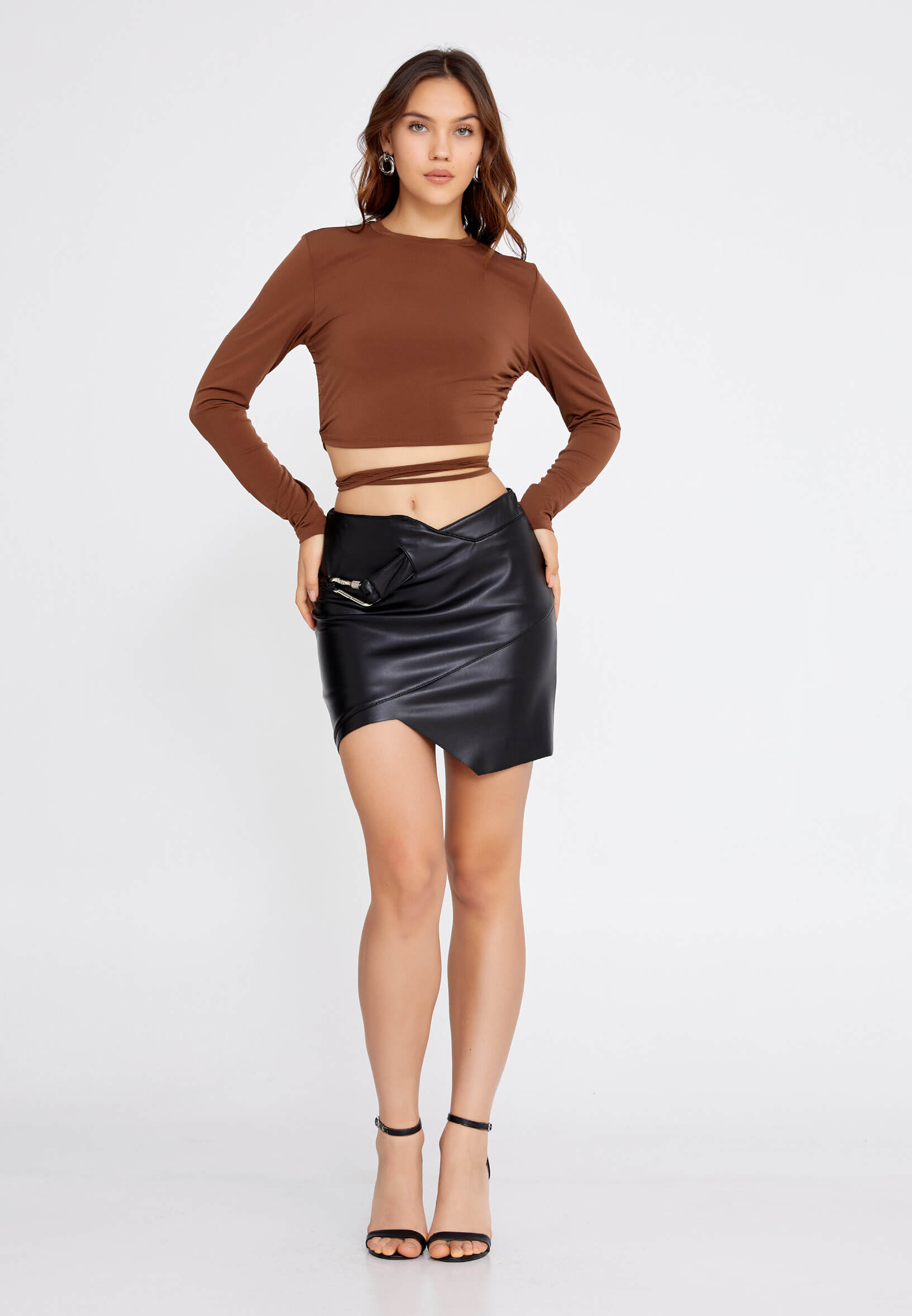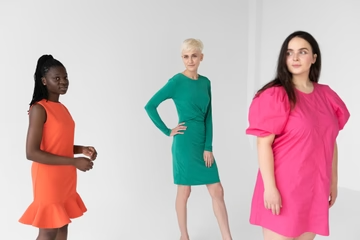Do you want to know how to price clothing for your boutique? We will discuss everything you need to know, from pricing methods to cost estimation.
Perhaps you've always wanted to design and sell clothing but need to figure out how much you should charge your customers. Pricing clothing is an essential part of any boutique business. We'll look at everything you need to know about setting the ideal prices for your products so that customers return and you stay in business.
Let's take a look at how to price clothing for your boutique.
Check out RENGIN Long Sleeve Mini Crepe Column Regular Black Evening Dress on our website!
Where Does Your Brand Stand in the Market?
When pricing your clothing, it is also critical to understand where your brand stands in the market.
If you're at the higher end of the market, your customers will expect to pay a significant amount for something with a higher perceived value, which implies you can't be cheap. Saving a few dollars will not motivate a premium customer, so do not discount your products.
When pricing clothing, you should be aware of your boutique's position in the market. Knowing your market position can help you determine how to price clothing for your boutique.
First Step Your Costs
Before determining how to price clothing for your boutique, you must start with your costs. You might have a target selling price in mind for your clothing line or a specific type of clothing you're attempting to sell. On the other hand, starting with your retail price is working backwards. You must first determine how much each item costs.
Perhaps you imagined yourself selling a pair of wholesale jeans for $35. But will that be enough to make a profit? You must first determine your cost per unit or the cost of making or purchasing the finished product to sell to consumers. This includes your production costs and any shipping and storage or warehouse fees.
Understanding Pricing Methods
You have two options when determining how to price clothing for your boutique. Both begin with cost per unit. The absorption pricing model and the keystone pricing model are the two models. It is up to you to decide how you want your pricing strategy.
Absorption Pricing Method
To begin, consider the absorption pricing method. As the name implies, this method "absorbs" all costs incurred into the pricing structure for your clothing. This will show you how to price clothing for your boutique.
You'll start with your unit cost once more. However, when calculating cost per unit, you'll start with a formula that adds your manufacturing costs to any overhead and administrative costs like rent, utilities, employee salaries, etc., divided by the number of units produced. It has five stages:
- Overheads, administrative expenses, and design expenses = the total cost of these expenses divided by the number of items produced in this style. Profit margin = profit percentage. Wholesale price = add together stages 1+2+3 to get your wholesale price. To get your retail price, multiply your wholesale price by 2 or up to 2.5.
To sum up: Cost price = Production cost per unit + ((Total overheads + admin expenses)/Number of units produced). The cost price is multiplied by your profit margin to arrive at your wholesale price. To calculate the RRP, multiply the wholesale price by 2-2.5.
Keystone Pricing Method
The keystone method is the next method you can use to determine how to price clothing for your boutique. This method takes the product's cost and doubles it in order to sell it to a retailer, also known as the wholesale price.
The retailer then doubles the price to sell to the consumer, known as the retail price. Using the pants as an example, your production cost is $20. With the keystone markup method, the wholesale price is automatically doubled to $40 for retailers. The retail price would then automatically double to $80 for the end user.
This is also referred to as the retail markup. In this case, the retail markup is twice the retailer's price or 50%. This pricing strategy ensures that all sellers downstream – retailer, wholesale supplier, creator – make a profit on the item and can continue to operate.
Backwards Pricing Method
This is an excellent method to price clothing for your boutique by determining whether a product is viable or worth producing.
You look at a product, say a coat, and estimate that the most you can get for it in the current market, keeping your brand and your consumers in mind, is $300. This is the recommended retail price for your product. Take that RRP and divide it by four to get your cost price. If you can sell this coat for $300, your finished product cost should be a quarter of that, or $75.
Check out NISALIN Mini Solid Color Regular Black Skirt on our website!
Choosing the Best Pricing Method
Pricing clothing is a challenging job. The methods described above are best for your business based on how much you want to mark up your clothing and the type of clothing you intend to sell. You may want to sell high-end, designer clothing; in that case, you can get away with higher markups and retail prices.
If you want to compete with a company that uses budget pricing, such as Kohl's or Walmart, you'll have to lower your prices or your profit margin expectations. This also applies if you are curious about how to price clothing for your boutique.
Wholesale clothing profit margins are typically around 20%, whereas high-end stores can have profit margins as high as 80%.
You can always increase your profit margins by lowering your cost per unit but this may necessitate using less expensive materials, outsourcing production, or cutting costs in other ways. For you we have covered how to price clothing and methods to consider while doing so.
Istanbul Fashion Center is Europe's largest B2B fashion wholesale center. If you're looking for in bulk purchases, IFC has you covered. For more information on bulk buying, please contact IFC.
You can read our previous article from https://www.istanbulfashioncenter.com/blog/icerik/how-to-get-rid-of-old-inventory.
















